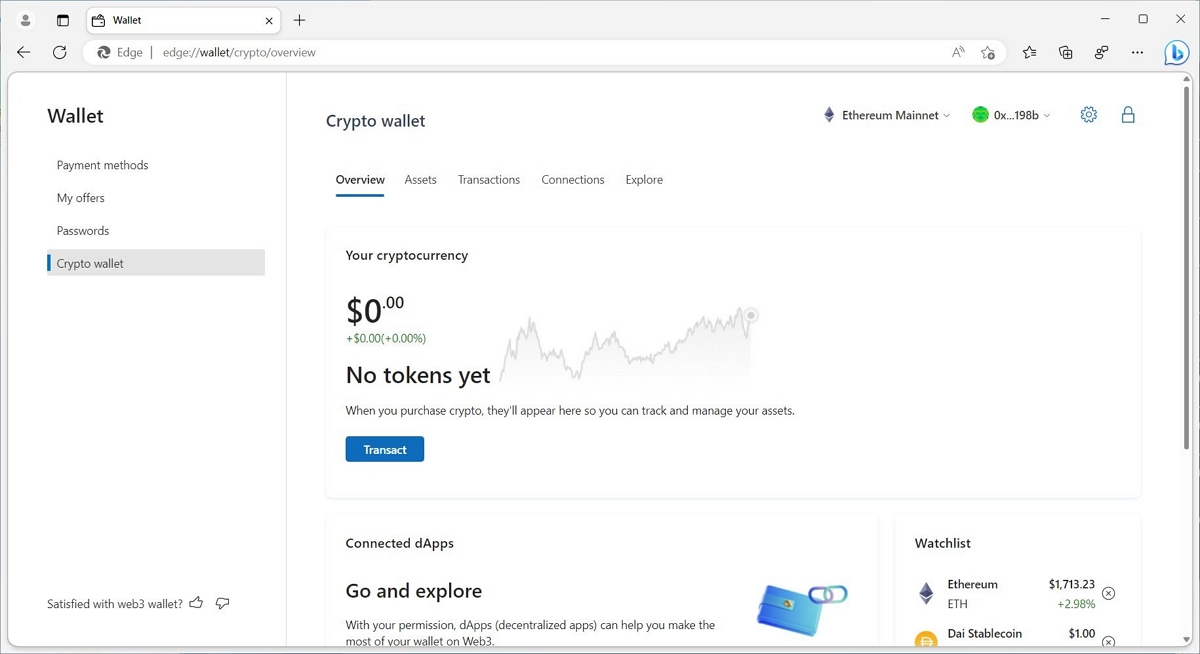Microsoft is quietly testing a cryptocurrency wallet built into its Edge browser, as Albacore reported in a tweet. It would notably support Ethereum.
Microsoft is reportedly developing a cryptocurrency wallet directly integrated into its Edge browser, allowing users to send and receive cryptoassets and NFTs without additional extensions. Currently in limited testing phase, the wallet is a non-custodial solutiongiving users full control over their funds.
For those who don’t know, a non-custodial wallet is a way for you to maintain control of your own cryptocurrency. This means that you own and control the information needed to access your funds. The wallet provider has no control over your assets, as only you have access to this information. Wallets don’t actually store your cryptocurrencies, they simply provide a way for you to interact with them while maintaining control of your private and public keys. Your digital assets are kept decentralized on a public ledger or blockchain. Moreover, we remind you that last week, hackers carried out the biggest theft of cryptocurrencies of the year with a loot of 184 million euros.
Also read – Almost a quarter of cryptocurrencies are actually scams
Edge will get its own crypto wallet
According to a report by BleepingComputer, this experimental Edge browser feature was discovered by “Albacore”. The screenshots shared by the researcher show a user interface for a cryptocurrency wallet, a decentralized application explorer, a newsfeed and the possibility of buying cryptocurrencies such as Bitcoin or Ethereum via Coinbase or MoonPay.

At this time, this new feature is not yet rolling out to Insiders and is likely only available to Microsoft Edge Dev Channel users in a very limited testing phase.
Upon registration, testers are asked to generate a password to secure their assets and a 12-word recovery phrase to recover their cryptocurrency wallet if they forget the password. Once the onboarding process is complete, the wallet generates an Ethereum address to allow users to receive funds through the Ethereum network.
Note that Microsoft clearly states that ” As a tester, you will use your own funds. In the event of loss of funds, Microsoft will not reimburse any loss. This is a confidential project and no details should be shared outside “, can we read on one of the pages.
